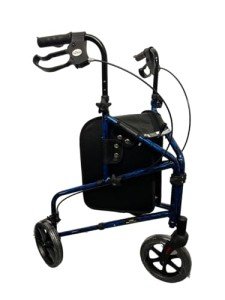When it concerns maintaining independence and mobility, people with minimal mobility or impairments often depend on different assistive gadgets. One such device that significantly pertains to the leading edge of mobility aids is the seat walker. This short article provides an in-depth appearance at seat walkers-- their features, benefits, types, and the factors to consider when selecting one.
A seat walker is a versatile mobility aid designed mostly for people who might have trouble walking unaided. It generally includes a frame with wheels, manages for support, and a built-in bench or seat, permitting users to take breaks when needed. Unlike basic walkers or rollators, which just provide assistance for walking, the inclusion of a seat makes the seat walker substantially more practical for lots of users.
Seat walkers have many benefits that make them an ideal option for numerous users.
Various kinds of seat walkers cater to the differing needs of users. Here is a breakdown of the most common types:
| Type | Features | Best For |
|---|---|---|
| Standard Seat Walker | Basic style, frequently with a lightweight frame and very little functions. | Users needing fundamental mobility support. |
| Durable Seat Walker | Enhanced frame, greater weight capability, frequently with larger seats. | People needing more robust assistance. |
| Rollator with Seat | Integrates seats with multi-height adjustable manages and better maneuverability. | Users needing regular resting options. |
| Transport Seat Walker | Designed for easy transport; frequently folds and has a little footprint. | Active users who travel often. |
Choosing a seat walker involves numerous factors to consider to guarantee it meets the user's specific requirements. Here are essential elements to bear in mind:
Seat walkers differ substantially in cost depending upon their features and develop quality. While it's vital to find a model that satisfies the user's requirements, it's similarly crucial to set a reasonable budget.

Q1: Who must use a seat walker?A1: Seat walkers are ideal for people with minimal mobility due to age, injury, or persistent conditions who need additional assistance while walking. Q2: Are seat walkers safe?A2: Yes, seat walkers are designed with safety in mind. They generally feature brakes, sturdy frames, and slip-resistant grips. Q3: How do I keep my seat walker?A3: Regularly examine the brakes and wheels for wear and tear.
Tidy the frame with a wet cloth and make sure
screws and components are tight. Q4: Can seat walkers be used outdoors?A4: Yes, numerous seat walkers are created for both indoor and outdoor use, though models with bigger wheels carry out much better on uneven surface areas. Q5: How do I know
which seat walker is ideal for me?A5: Consult with a doctor or occupational therapist who can examine your mobility requirements and advise suitable alternatives based on your unique situation. The benefit and flexibility of seat walkers make them an important tool for those with mobility obstacles. By offering assistance, stability, and an opportunity for rest, they empower users to remain active and independent. When selecting a seat walker, people need to consider their personal requirements, lifestyle, and safety to discover the very best match for them. With the right seat walker, numerous users can enjoy a restored sense of liberty, improving their lifestyle and maintaining their independence. In summary, whether one is navigating through the home, running errands, or delighting in fresh air in a park, a seat walker can prove to be an important companion, transforming daily activities into manageable jobs.
No Data Found!

